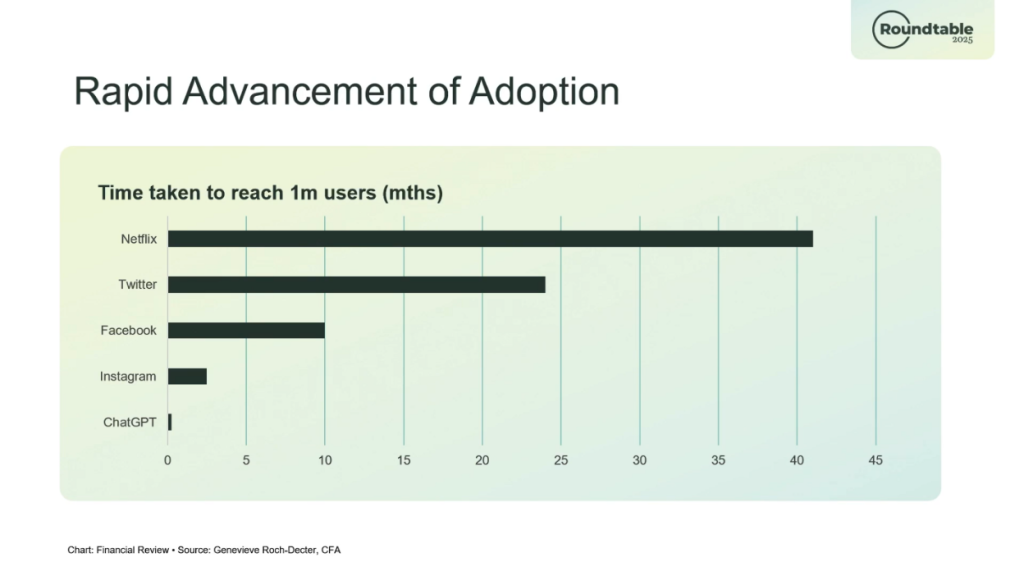At Qualivis Roundtable 2025, Jason Drucker, chief product officer at Aya Healthcare, delivered a powerful and engaging session in which he explored three essential themes: the state of the healthcare workforce, the role of emerging technology and how to build a more agile and intelligent staffing ecosystem.
Table of Contents
The workforce crisis: A critical shortage
Drucker addressed the serious issue of a persistent healthcare workforce shortage, particularly in nursing. Despite some recovery in staffing demand, nearly every region continues to feel the squeeze. A customer recently shared that 35% of nurses are nearing retirement — a figure that makes optimistic projections feel unrealistic. Attendees agreed: The shortage is likely underestimated.
Recruitment and retention are top of mind for nurse leaders, closely followed by concerns over staff well-being. The urgency to stabilize and support the workforce has never been higher.
The rise of workforce flexibility
Two decades ago, flexibility in staffing meant float pools. Today, many organizations offer self-scheduling and larger resource management strategies, but it remains a work in progress.
Nurses increasingly prioritize flexibility over pay. This mirrors the broader labor market — 64 million people, nearly 40% of the U.S. workforce, freelanced in 2023. This number is expected to hit 90 million by 2028.
“Flexible working in the United States is becoming the rule, not the exception.”
Jason Drucker, Chief Product Officer at Aya Healthcare
These professionals are educated, tech-savvy and motivated by control — control over their time and schedules, where they work and the trajectory of their careers. Healthcare needs to keep pace.
AI: Navigating hype vs. real value
Drucker then shifted the focus to AI, introducing what he called the “evolution of ease” — a progression from desktop computers to smartphones and now to generative AI. The explosive growth of tools like ChatGPT signals that generative AI is the next step in this evolution. In fact, generative AI has been adopted exponentially faster than previous transformative technologies.

But Drucker made a key distinction: Not all AI is created equal. He grouped AI into four categories:
- Generative AI, which creates new content based on patterns in existing data. Examples of this include ChatGPT for generating emails, blogs, etc. and DALL-E for generating images from text.
- Machine learning, or AI that analyzes data to make predictions or decisions without being programmed for every task. For example, predictive analytics in Power BI dashboards or even recommender systems, like Amazon suggested products.
- Natural language processing, or AI that enables machines to understand, interpret and respond to written or spoken human language. This includes voice assistants like Siri and Alexa and real-time translation earbuds.
- Agentic AI, which can perceive its environment, make decisions and act autonomously toward a goal. Examples of this include self-driving cars and warehouse robots fulfilling orders.
Generative AI is already useful, but agentic AI remains limited by unstructured, siloed data. Ultimately, AI only works as well as the data it draws from.
“If we wanted to create an agentic workflow … these [data] gaps are going to be like brick walls.”
Jason Drucker, Chief Product Officer at Aya Healthcare
The real bottleneck: Data silos and integration
Using an iceberg analogy, Drucker explained that the user interface is just the visible layer — beneath it lies a messy data landscape. Many organizations still rely on basic integrations like flat files (e.g., Excel documents) and minimal APIs. These patchwork connections make it difficult to share information, limiting automation and real-time visibility.
We’ve long evaluated software based on features — “Does it do this? Does it do that?” — but that surface-level view misses the bigger picture. Each system holds valuable data, yet without deeper integration, that data remains siloed. Point solutions may function well on their own, but when they can’t communicate across systems, they perpetuate inefficiency rather than solving it.
The path forward: From siloes to platforms
Drucker encouraged moving beyond feature-based software decisions toward platforms that unify data and workflows. He highlighted LotusOne — Qualivis’ integrated platform — as an example. This system connects clinicians, healthcare systems and operational tools like VMS, float pool management and job boards within a single, cohesive ecosystem. The result is shared data, coordinated shifts and the foundational infrastructure needed for agentic AI.
Rather than relying on disconnected systems, Qualivis offers a fully connected platform where data flows seamlessly across all product features. This unified infrastructure provides ubiquitous access to workforce data, enabling deeper reporting, real-time analytics and more strategic decision-making across the health system. By eliminating data silos, organizations gain a comprehensive view of their contingent workforce — improving transparency, responsiveness and efficiency.
For example, if a per diem nurse’s information exists only in a standalone VMS, integrating the clinician into a float pool would require duplicate data entry, manual updates and time-consuming coordination between departments. With a connected platform like LotusOne, that nurse’s profile is instantly available across modules, supporting faster redeployment, reducing administrative errors and enabling smarter, data-driven staffing decisions.
Actionable takeaways
Drucker left the Roundtable audience with clear guidance:
- Ignore AI hype; prioritize structured, actionable data.
- Choose integrated platforms over patched-together point solutions.
- Choose platforms that support complete workflow automation.
- Embrace flexible, adaptive scheduling models.
Conclusion
The future of healthcare staffing is not only digital — it’s dynamic, intelligent and interconnected. As Drucker emphasized, we’re just beginning this journey. But with the right data, platforms and mindset, we can bridge workforce gaps, elevate care delivery and sail confidently into the digital frontier.
